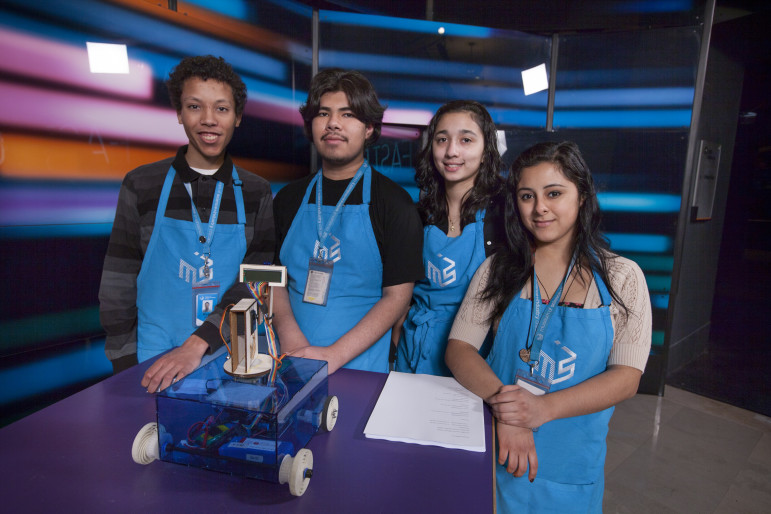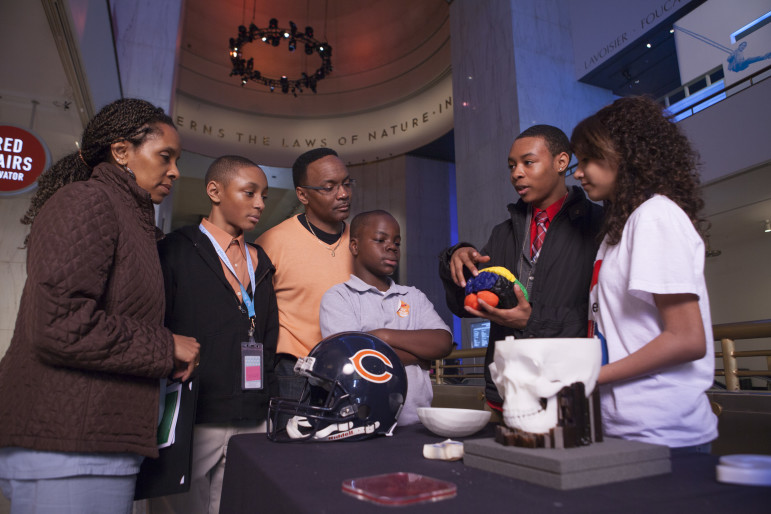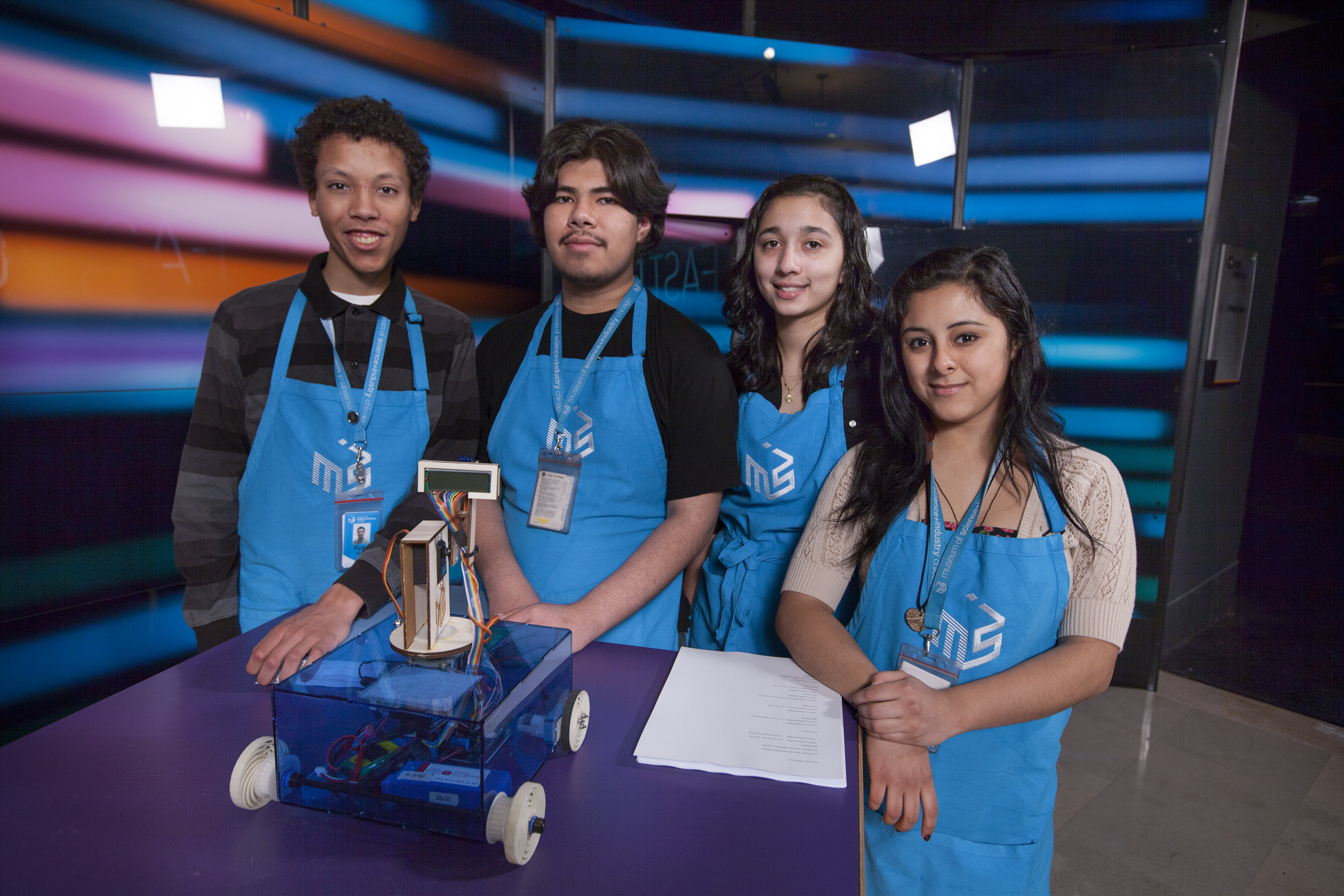
Museum of Science and Industry, Chicago
High school students learn about science and then present hands-on experiments to visitors as part of the Science Achievers youth development program at the Museum of Science and Industry, Chicago.
Do out-of-school time STEM programs really lead kids into science careers?
The Chicago Museum of Science and Industry plans to find out.
The museum has received a four-year, nearly $1 million grant from the National Science Foundation to track youth who have taken part in two museum programs, Science Minors and Science Achievers.
Rigorous studies of the impact of science, technology, engineering and math (STEM) programs on career choice — especially for minority youth — are lacking, according to the museum.
Most studies have relied on snapshots in time rather than longitudinal research, said Bryan Wunar, the museum’s director of community initiatives.
This project will address this gap, he said.
About 200 high school students in the Chicago area take part in the museum’s Science Minors and Science Achievers programs each year. Two-thirds of participants are girls, and about three-fourths are African-American or Hispanic.
“The teens in these programs are developing leadership, teamwork and critical thinking skills they need for the jobs of the future,” Wunar said.
They get 10 weeks of education and training in science subjects and then can volunteer to present interactive experiments to museum visitors.
This turns the tables and let kids “become part of the public experience in the museum,” Wunar said. They go out on the floor of the museum and share what they’ve learned with younger kids and families.
Many students stay with the program all four years of high school.
[Related: STEM Education Bill With OST Focus Signed Into Law]
“We wanted to have a better understanding of the types of decisions youth were making as they were going into high school and college, and the role the museum could play … with these decisions,” he said.
“We currently have measured interest and confidence factors, more than content knowledge gains,” Wunar explained in an email. “As we move into the new National Science Foundation funded work, we will be look at additional academic and skills-based outcomes.”

Museum of Science and Industry, Chicago
High school students learn about science and then present hands-on experiments to visitors as part of the Science Achievers youth development program at the Museum of Science and Industry, Chicago.
No shortage of STEM graduates
One goal of OST STEM programs has been to interest more minority and female students in STEM careers since they are underrepresented there.
Another goal has been to develop a pipeline of students into STEM jobs, addressing fears of a labor shortage and concern that the United States is falling behind in global competitiveness.
But Michael S. Teitelbaum, a demographer and senior research associate with the Labor and Worklife Program at Harvard Law School, says no shortage really exists.
In fact, more science and engineering students graduate each year than can find jobs, he wrote in an article in the Atlantic last year.
In addition, student interest in STEM is already high and is increasing, according to a report by ACT, the college admissions testing service.
However, the report “The Condition of STEM 2014” said that more must be done to keep students on track as they move through college and into the workplace.
It showed that girls entering college were less prepared for STEM fields than boys, and African-American and Hispanic students were also less prepared.
Wunar said the Museum of Science and Industry’s research project is to understand how to help more young people get on a STEM path, but it’s also to help develop broader 21st-century skills.
“People are likely to need more science, technology, math and engineering skills” regardless of their profession, he said.
“It’s about preparing them to go out in the world and be productive citizens,” Wunar said.
More related articles:
Lights On Afterschool Celebrations Recognize Programs Big and Small
Setting Standards for Out-of-School Time
OST Advocates Descend on Capitol Hill






























